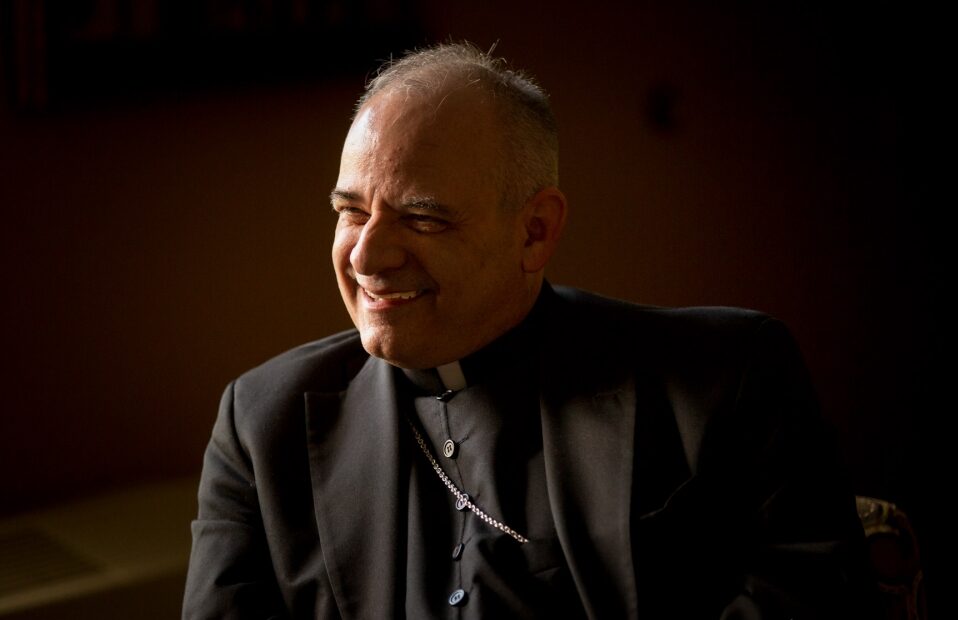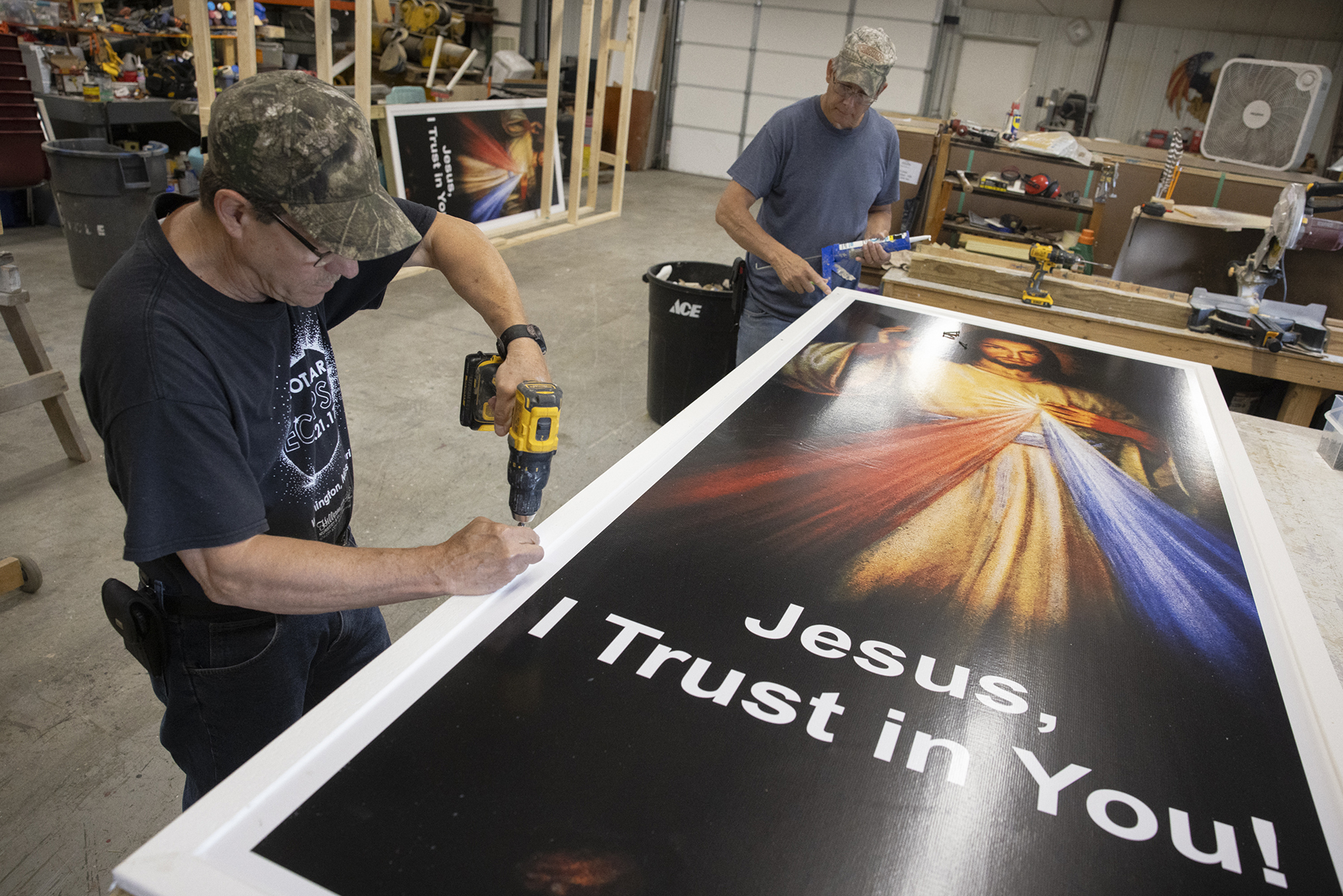Life’s changes got you down? Get fuel at the Stations

‘Timeless’ Lenten devotion calls to mind the Passion of Christ

When you’re tired and afraid and struggle to get back up again after falling or failing, look to the Stations of the Cross for motivation.
In the Stations of the Cross, when Christ falls three times, those moments “really resonate, especially to a person who’s been through a disease and treatment … that idea of feeling knocked down physically and getting back up and continuing life,” said Steve Givens, a spiritual director and a widely published writer on issues of faith and spirituality from Incarnate Word Parish in Chesterfield. “We don’t have to look any further than Jesus for a great example of what that’s like. Sometimes that means accepting help from others like Simon who helps Him up or Veronica who wipes His face. There’s a richness in the Stations of real life.”
For people facing life changes such as empty-nest parenting, older age, retirement and health challenges, the Stations of the Cross can be especially meaningful.
Givens came into the Church as a young adult, and he found it easy to connect life’s trials with the last walk of Jesus. He was at White House Jesuit Retreat in Oakville walking the stations when he began to write “Crossroads: Stations of the Cross for Times of Change,” published by Creative Communications for the Parish. He’s 58 and, he said, like a lot of people roughly his age, “we’re leaning into the next stage of life and trying to figure out what that’s going to be.”
In the 32-page “Crossroads” book, Givens reminds readers that Jesus, our “suffering servant,” walks with them.
Givens, associate vice chancellor and chief of staff in the Office of the Chancellor at Washington University, was diagnosed in 2007 with a rare blood disease called Langerhans Cell Histiocytosis. He underwent chemotherapy treatment for more than three years, and that experience is the subject of his book, “Embraced by God: Facing Chemotherapy with Faith,” released in 2010 by Twenty-Third Publications.
People who retire enter a next stage of life that might include a new commitment to volunteering, another career, a bigger focus on family and more. “I can’t disconnect those kinds of decisions from my life of faith,” Givens said.
The Spiritual Exercises of St. Ignatius — a compilation of meditations, prayers, and contemplative practices developed by St. Ignatius Loyola to help people deepen their relationship with God — also help connect with the life of Christ’s ministry, Passion and Resurrection, said Givens, a regular contributor to “Living Faith daily devotional and author of booklets for Catholic children and families co-written with his wife and son and published by Liguori Publications and Creative Communications for the Parish.
Franciscan Father Bill Cardy, chaplain at St. Anthony’s Medical Center in south St. Louis County, said that St. Francis is credited with establishing the Stations of the Cross. “He was a man who embraced suffering and served the lepers,” Father Cardy said.
People relate differently each time they make the Stations of the Cross depending on their situation, including whether they are experiencing mental or physical pain, he said, referring to the Stations as “timeless.”
Richard P. Johnson, who works with older adults and the spirituality of aging, has inspired maturing adults to follow their hearts and live more abundant lives in Christ. The culture hasn’t discovered the growth, purpose, and meaning in aging, Johnson explains. “We seem to carry around some strange, irrational notion that aging should be avoided, resisted or pushed away … at all costs don’t let aging happen to you,” he wrote. “Because we suffer this age prejudice, we may do an unfortunate thing, we may unconsciously run from our own aging and in so doing deny ourselves the rich, living water that God offers us in maturation.”
>> Stations of the Cross
The Stations of the Cross, a popular Lenten devotion, began as the practice of pious pilgrims to Jerusalem who would retrace the final journey of Jesus Christ to Calvary.
Later, for the many who wanted to pass along the same route, but could not make the trip to Jerusalem, a practice developed that eventually took the form of the 14 stations found in almost every church. In the St. Louis area, outdoor Stations are at Annunciation Parish in Webster Groves, on the Cardinal Carberry campus of Cardinal Ritter Senior Services in Shrewsbury, at the Shrine of Our Lady of the Snows in Belleville, Ill., and elsewhere.
Reflecting on the “Journey to the Foot of the Cross,” Bishop David L. Ricken of Green Bay, Wis., points out that Lent is “a journey through the desert to the foot of the cross on Good Friday, as we seek Him out, ask His help, join in His suffering, and learn to love like Him.” Bishop Ricken adds that “as we pray, we go on a journey, one that hopefully brings us closer to Christ and leaves us changed by the encounter with Him.”
For more information, visit www.usccb.org/prayer-and-worship/prayers-and-devotions/stations-of-the-cross/index.cfm
To pray the Stations of the Cross with images photographed at St. Margaret of Scotland Parish in south St. Louis a few years ago, click here. The prayers accompanying each station are selections from the traditional St. Francis of Assisi “Way of the Cross” meditations.
Photo Credit: Abigail Witte When you’re tired and afraid and struggle to get back up again after falling or failing, look to the Stations of the Cross for motivation. In … Life’s changes got you down? Get fuel at the Stations
Subscribe to Read All St. Louis Review Stories
All readers receive 5 stories to read free per month. After that, readers will need to be logged in.
If you are currently receive the St. Louis Review at your home or office, please send your name and address (and subscriber id if you know it) to subscriptions@stlouisreview.com to get your login information.
If you are not currently a subscriber to the St. Louis Review, please contact subscriptions@stlouisreview.com for information on how to subscribe.







